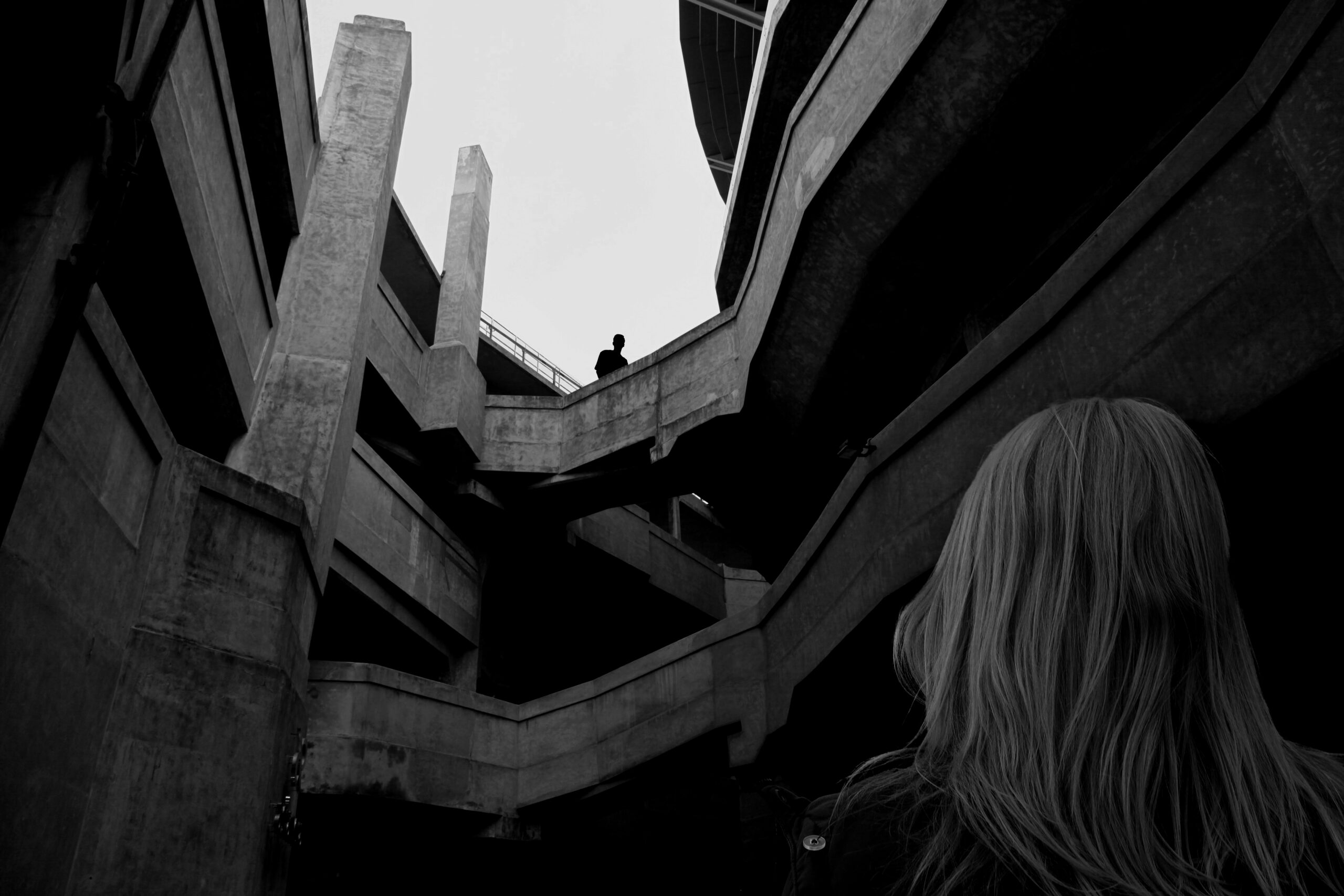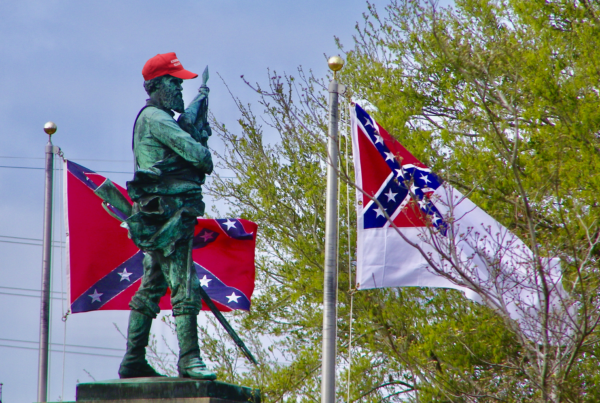Many on the American right have long taken themselves to be stalwart defenders of “classical liberalism.” This is especially true of whatever is left of the non-MAGA right. In his Suicide of the West, the prominent Never-Trumper Jonah Goldberg discusses how “tragically the dream of liberalism is dying away” and lends his approval to “conservatives in a classical liberal vein” who militated against the expansion of big government. In his book The Right, Matthew Continetti claims that “conservatism has been there to save liberalism from weakness, woolly-headedness, and radicalism.” He writes approvingly of Harvey Mansfield’s claim that the “principal task of conservatism is to save liberalism from the liberals.” This view has been so taken for granted that the journalist and scholar George Will, in his book The Conservative Sensibility, opined that “American conservatives are the custodians of the classical liberal tradition.”
Needless to say, many of these “conservative” classical liberals have been shocked and even appalled at the rise of Trumpism, alongside the growing cornucopia of blatantly illiberal views on the American right. Their reactions have ranged from shock outrage to paternalistic lecturing, though none have done much to move the American right an iota closer to their worldview. For many MAGAfied intellectuals weaned on Patrick Deneen, Bronze Age Pervert, and West Coast Straussianism, Yoram Hazony was far closer to the mark when he declared that “liberalism destroys everything.” Given this, it is worth looking more deeply into the nature of liberalism and the right, as distinct philosophies.
Liberalism and Equality
In his book The City and Man Leo Strauss waxes poetic about antiquity and its distinct worldview. Referring to the writings of Aristotle, Strauss ruminates on how, for much of human history, very basic liberal ideas about human equality weren’t even rejected—they simply weren’t on the menu:
For Aristotle, political inequality is ultimately justified by the natural inequality among men. The fact that some men are by nature rulers and others by nature ruled points in turn to the inequality which pervades nature as a whole: the whole as an ordered whole consists of beings of different rank.
This view of human beings as by nature or divine ordination unequal, and so destined for hierarchical society, came in multitudes of flavors. In his book Poisoning the Minds of the Lower Orders, a bracing history of the emergence of the English right, Don Herzog points out how medieval social thinking was dominated by the image of a “Great Chain of Being.” God had ordained that all of nature be organized in a great hierarchy that ascended from demons, through lower animals, to human beings, to angels, and of course ended with himself at the summit. This was taken as a model for how society should be organized, with the feudal system mapping a similar kind of hierarchy to that ordained by God in nature. In Modern Social Imaginaries the seminal Catholic philosopher Charles Taylor discusses how pre-liberal ways of conceiving society assumed the importance of “hierarchical complementarity.” Society in its proper form was to be a pyramid, wherein each rung needed the other, but those at the summit obviously enjoyed more dignity, status, wealth, and power than others.
Liberalism, for all its many limitations (well documented by an array of left critics) came into the world dead set on eradicating this anti-egalitarian and hierarchical vision. It was, of course, not the first ideology to postulate a more egalitarian view of humanity and society. Antecedents can be found in Buddhism and Stoicism, for instance. Or, if you’re Nietzsche, Christianity itself. However, liberalism was the most successful at articulating a comprehensive and ultimately persuasive social and political alternative, one that would eventually gain revolutionary power.
Liberalism, for all its many limitations…came into the world dead set on eradicating an anti-egalitarian and hierarchical vision.
Pre-liberals like Hobbes mocked the arguments of Aristotle and the Aristotelians, insisting that in a state of nature people were clearly, for the most part, biologically equal. Differences in human strength were minimal and transient, and in terms of intellectual powers there was an even greater equality between individuals since prudence was but experience gained over time. Locke insisted that the state of nature was a state of equality wherein all individuals possessed natural rights to life, liberty, and property which they did not cede when entering civil society. In the First Treatise of Government Locke mocked the conservative Robert Filmer who tried to argue in De Patriarcha that the legitimacy of monarchy was grounded in the monarch’s descent from Adam—the first ruler. This was a clear sign that liberals felt that time was on their side, given that arguments for inequality increasingly looked ridiculous. By the time of the American Revolution, Thomas Paine famously declared that equality was common sense.
For many classical liberals, the positive story of liberalisms’ ideological development largely ends there, although there was a lot of practical work to be done winning equal “natural rights” for slaves, women, minorities, LGBTQ persons, and so on. But this is to cut things off too quickly. What’s quite remarkable is how, starting with Paine and Mary Wollstonecraft, many liberals came to insist that classical liberalisms’ fixation on aristocratic inequality and state power was inadequate. They became increasingly critical of how inequities in property lead to inequities in political power, in addition to corrupting the moral sentiments of rich and poor alike. By the time one gets to John Stuart Mill’s Autobiography, socialism comes to be seen as a viable solution to these enduring inequities. Mill, the quintessential liberal of the 19th century, proudly declared that his “ideal of ultimate improvement went far beyond Democracy, and would class us decidedly under the general designation of Socialists.” A hundred years later the equally iconic 20th-century American liberal John Rawls would similarly argue that liberalism required special concern for the least well-off, in addition to maximal respect for pluralism. By the time of his last work, Justice as Fairness: A Restatement, Rawls even insisted that welfarism was not sufficient to realize liberal principles of justice. Only “property-owning democracy” or “liberal socialism” would do. These transitions tracked the evolution of liberal practice through much of the late 19th and early 20th centuries. Liberals, often inspired by or even working with socialist and social-democratic parties, worked to construct the welfare states which—for all their flaws—remain a high point in the just quest to create societies truly committed to equality and liberty for all.
It is a great irony then that, at the height of their aspirations, what Sam Moyn calls “Cold War liberals” reconceived the revolutionary liberal tradition by drawing on insights from the right, insisting on human imperfectability and the need to moderate our social hopes. This reconceptualization of liberalism was so successful that liberalisms’ fighting history, from the American through the French and 19th-century revolutions, was downplayed and its reactionary dimensions foregrounded. Ironically, Cold War liberalism developed a view of the tradition that mostly confirms the vulgar Marxist denunciation of liberalism as nothing more than a bourgeois defense of private property. They were helped tremendously by extremely right-wing liberals like Ludwig Von Mises, who insisted in his Liberalism text that the “program of liberalism…if condensed into a single word, would have to read: property, that is, private ownership of the means of production…All the other demands of liberalism result from this fundamental demand.”
“Cold War Liberals” reconceived the revolutionary liberal tradition by drawing on insights from the right. This reconceptualization of liberalism was so successful that liberalisms’ fighting history was downplayed and its reactionary dimensions foregrounded…But that doesn’t mean we should give up on the liberal tradition, which has rejuvenated itself many times in the past. Doing so now means rediscovering its ideological roots in equality to heighten its contrast with the illiberal movements arising today.
This version of liberalism, whether called Cold War liberalism or neoliberalism, became the dominant flavor for many decades. It was neither inspired nor inspiring, and when post-liberals like Patrick Deneen declare that it has “failed,” it is hard not to think neoliberalism deserved it. But that doesn’t mean we should give up on the liberal tradition, which has rejuvenated itself many times in the past. Doing so now means rediscovering its ideological roots in equality to heighten its contrast with the illiberal movements arising today.
The Right Has Never Been Liberal
“Liberalism is a term with many overlapping senses. In one use it denotes an attitude towards (and also a theory of) the state and its functions, in another use it denotes a moral outlook, which sometimes rises to the level of theory, but which for the most part remains hidden in the crannies of everyday existence. Its guiding principle is tolerance—although, as it critics do not fail to say, its tolerance towards non-liberals is quickly exhausted. In all its forms, liberalism incorporates an attitude of respect towards the individual existence—an attempt to leave as much moral and political space around every person as is compatible with the demands of social life. As such it has been thought to imply a kind of egalitarianism. For by its very nature, the respect which liberalism shows to the individual, it shows to each individual equally.”
These words from Roger Scruton, in his The Meaning of Conservatism, help us understand that liberalism is based on the idea of the fundamental equality of all human beings—an idea that it shares with other Enlightenment traditions like socialism and many other progressive movements. As Scruton notes, this egalitarianism is the basis of liberal arguments for liberty, since the argument that people should be free flows from the conviction that it is wrong for any person to dominate another when we all are, or should be, fundamentally equal.
Liberalism is based on the idea of the fundamental equality of all human beings…The philosophy of the right is based on a very different outlook.
The philosophy of the right is based on a very different outlook. F.A Hayek, the quintessential Cold War liberal, captured its essence very successfully in his classic essay “Why I Am Not a Conservative.” Here Hayek notes that to be a conservative, and on the right generally, means being committed to the idea that there are “recognizably superior” persons in society. And these recognizably superior persons are entitled to more power, wealth, status, agency, and golden toilets. Who these recognizably superior persons are differs radically depending on what faction of the right we are talking about. In Conservatism: A Rediscovery, Yoram Hazony calls for rejecting the “insatiable egalitarianism of choices” demanded by liberalism and replacing it with respect for national traditions and hierarchies.
Bronze Age Mindset, authored most likely by Costin Alamariu under the nom de plume Bronze Age Pervert, sneers at the “bugmen” and “yeast” who make up most of humankind and calls for the creation of new coconut oil-glistened aristocracy. In The Conscience of a Conservative Barry Goldwater (or rather his ghostwriter) gestured towards a kind of abstract Christian equality while emphatically rejecting any state measures which effaced the natural inequality of people on this earth. As he put it, “We are all equal in the eyes of God but we are equal in no other respect. Artificial devices for enforcing equality among unequal men must be rejected.” In each of these very different cases, the right develops complex forms of anti-egalitarian ethics. At their core, these ethical systems embody the imperative of James Fitzjames Stevens. In his classic critique of John Stuart Mill, Liberty, Fraternity and Equality, Stevens insists that the lower orders must learn that “to obey a real superior, to submit to a real necessity and make the best of it in good part, is one of the most important of all virtues—a virtue absolutely essential to the attainment of anything great and lasting.”
The right often writes in a nostalgic register, looking back fondly on the antiquarian societies lionized by Leo Strauss. But with its awareness that egalitarian-liberalism has long been in the driver’s seat, this nostalgia invariably becomes future-minded: a call to change society by returning to an older way of being, or even to develop new ones. Or, on the radical right, to develop utopian ideologies for a brighter and less decadent future which will not repeat the failures of the past, allowing Burke’s “swinish multitude” as much power as they’ve won. Very often this anti-egalitarian elitism is ironically expressed in very crude and even quite funny terms à la Trump’s division of the world into “winners and losers” or Mitt Romney’s infamous 47 percent. But the right has also produced many writers of weight, ranging from Burke to Dostoevsky to Nietzsche and Hazony. They articulate a distinct vision of a ranked and ordered society which has found many devotees over the centuries. But it is not a liberal vision.
Matthew McManus is a lecturer in the political science department at the University of Michigan. He is the author of The Emergence of Postmodernity, Liberalism and Liberal Rights: A Critical Legal Argument, and The Political Right and Equality, amongst other books. His forthcoming book is titled The Political Theory of Liberal Socialism. He is also a frequent contributor to various magazines, including Jacobin, Current Affairs, Liberal Currents, Aeon, and others.
Image by John Chrobak made using “IMG_6714” by Mad Ball, licensed under CC BY-SA 2.0.







